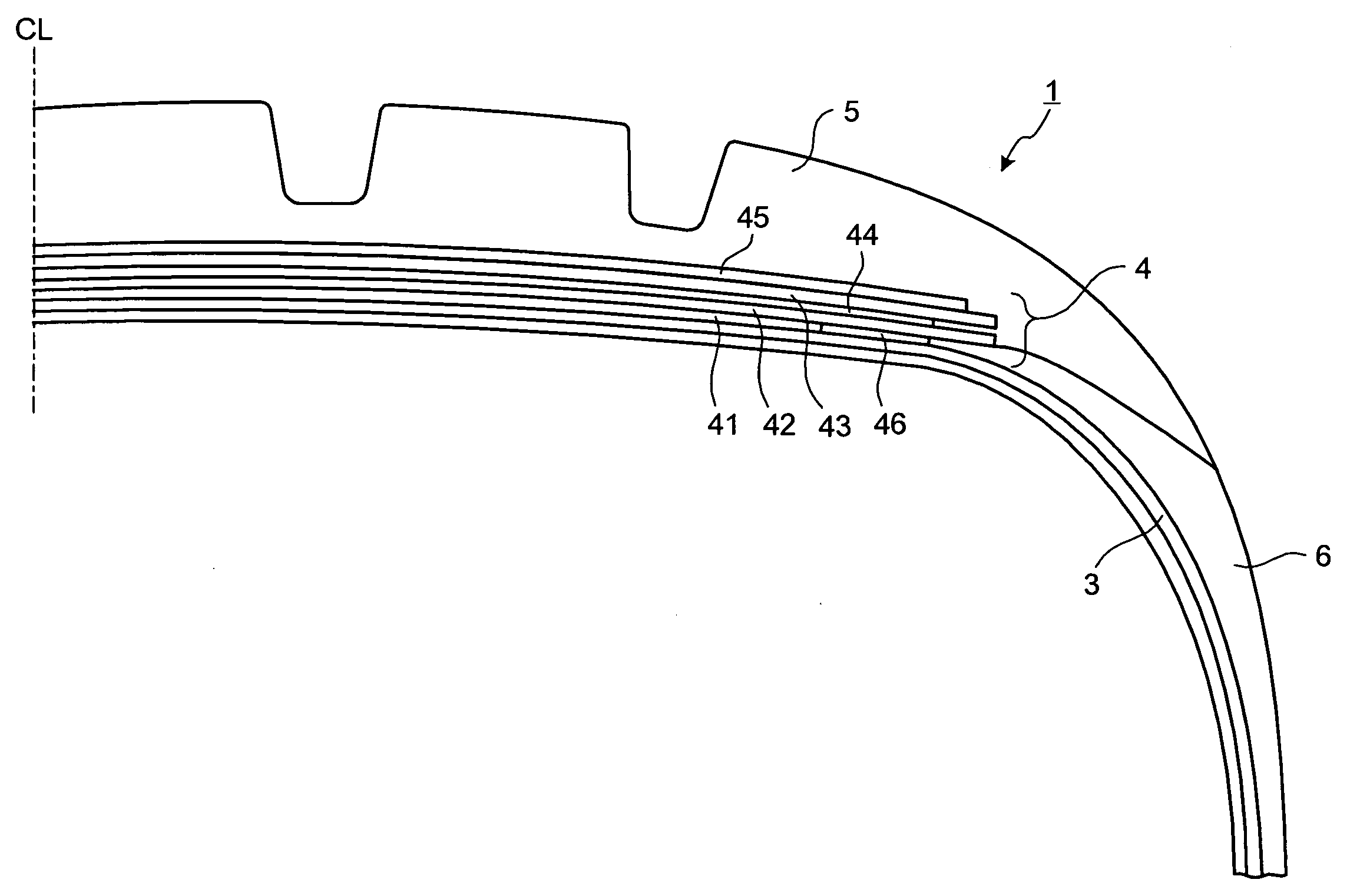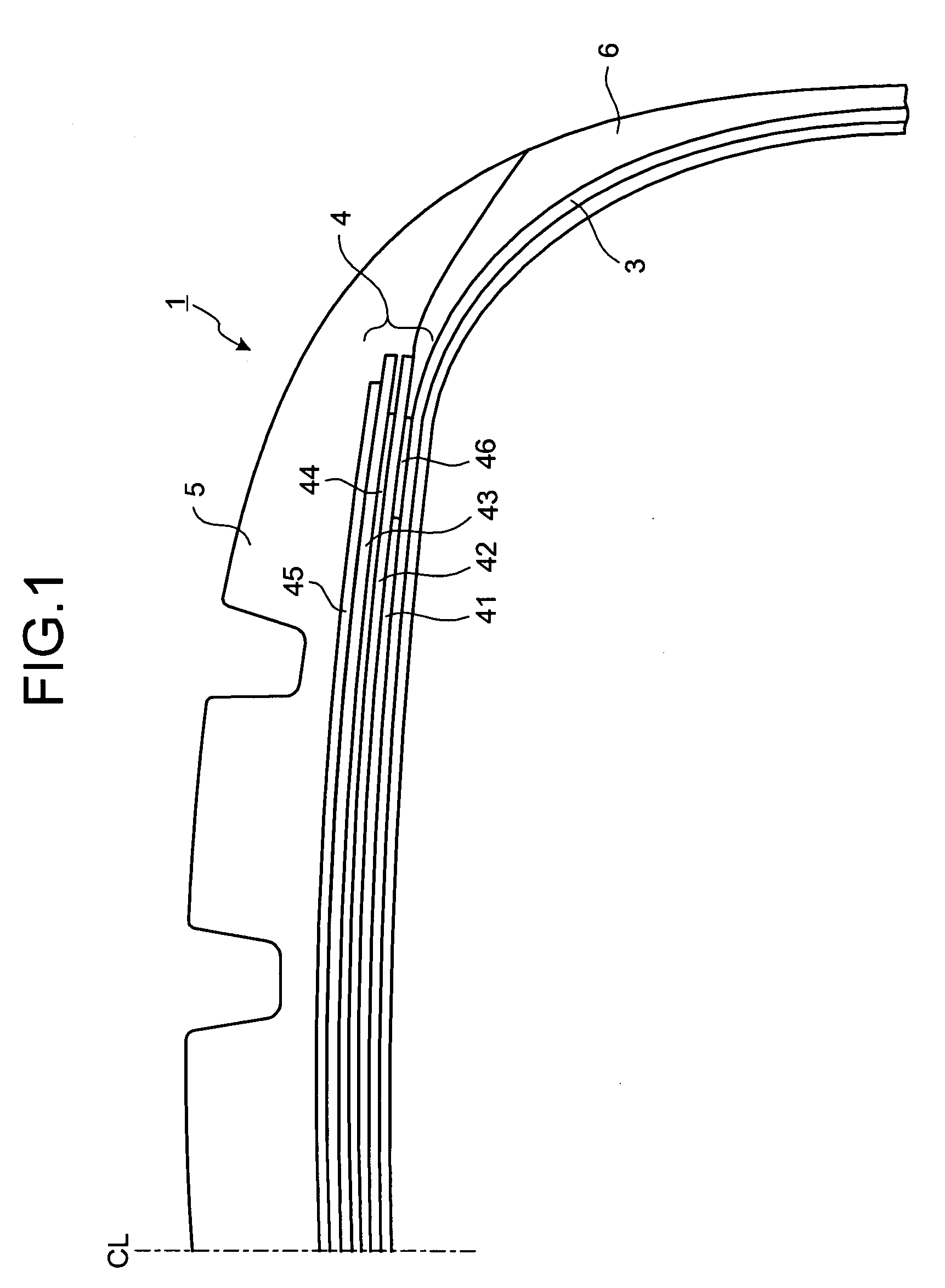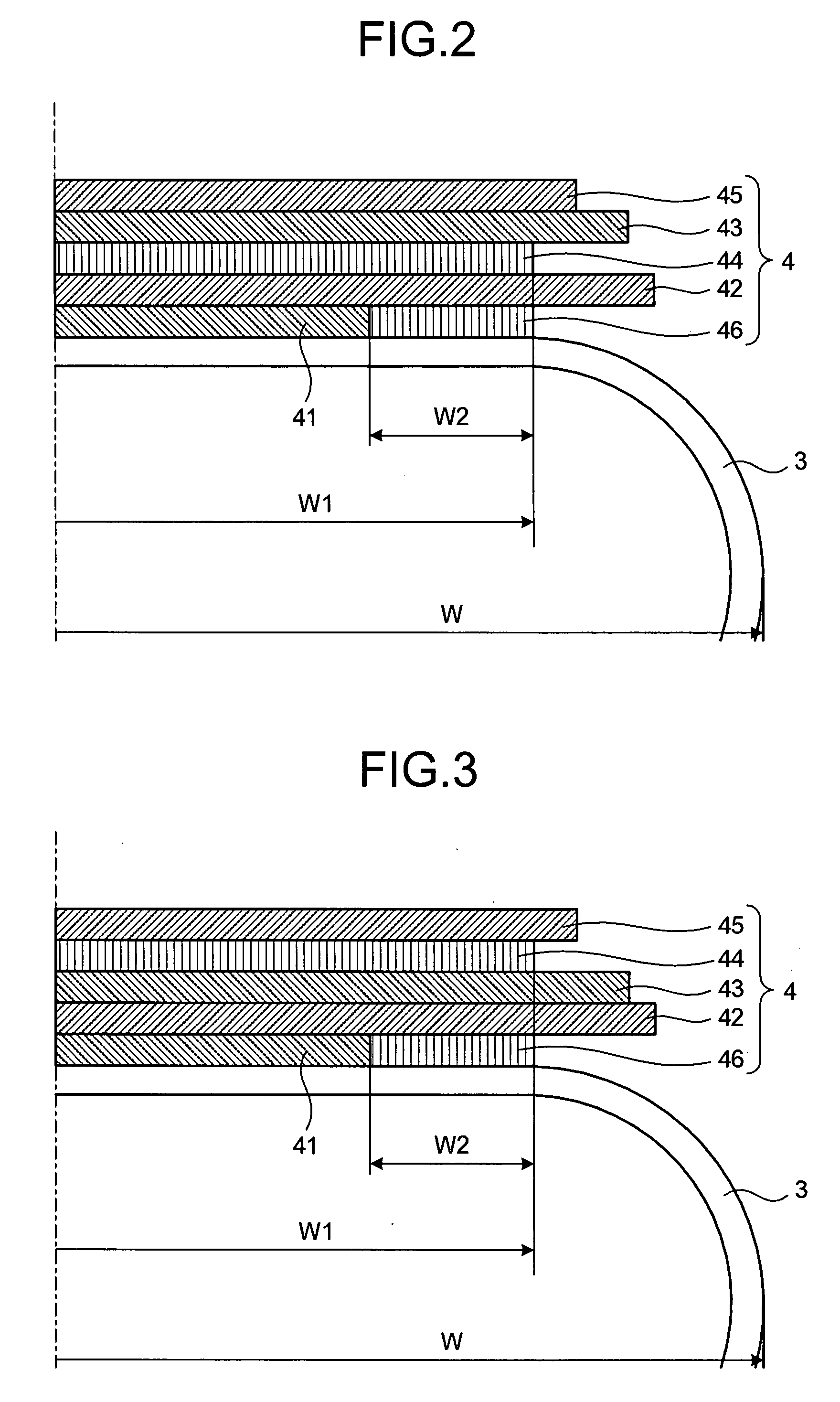Pneumatic Tire
- Summary
- Abstract
- Description
- Claims
- Application Information
AI Technical Summary
Benefits of technology
Problems solved by technology
Method used
Image
Examples
embodiment
[0050]FIG. 1 is a cross section a pneumatic tire in a tire meridian direction according to an embodiment of the present invention. FIG. 2 is an explanatory view of a belt structure of the pneumatic tire shown in FIG. 1. FIG. 3 is an explanatory view of a modified example of the pneumatic tire shown in FIG. 1. FIGS. 4 to 11 are tables each containing results of performance tests of pneumatic tires.
[0051]A pneumatic tire 1 includes bead cores (not shown), a carcass layer 3, a belt layer 4, tread rubber 5, and side wall rubbers 6 (see FIG. 1). A bead core is provided on the left and the right. The carcass layer 3 extends between the left and right bead cores, and it has a toroidal shape. The belt layer 4 is formed of a plurality of belt members of 41 to 46 that are superposed, and is arranged on a tire-radial direction outer side with respect to the carcass layer 3. The tread rubber 5 is arranged on the tire-radial direction outer side with respect to both the carcass layer 3 and the b...
first modified example
[0061]In the pneumatic tire 1, the first circumferential-direction reinforcing layer 44 is arranged so as to be interposed between the cross belts 42 and 43. However, the arrangement of the first circumferential-direction reinforcing layer 44 is not limited to this arrangement. The first circumferential-direction reinforcing layer 44 can be arranged so as to be interposed between the outer-side cross belt 43 and the protection belt 45 (see FIG. 3). With such a structure, the above functions and effects of (1) to (3) are obtained. Because the movement of the first circumferential-direction reinforcing layer 44 is constrained because of the protection belt 45, the separation near the first circumferential-direction reinforcing layer 44 is suppressed. Such suppression of separation leads to an advantage that the anti-belt-edge-separation performance of the tire improves.
[0062]In the above structure, it is preferable that the cord member of the protection belt 45 be oblique in a directi...
second modified example
[0063]In the pneumatic tire 1, it is preferable that each cord member of each of the cross belts 42 and 43 has a fiber direction oblique to the tire circumferential direction at an angle of 25 degrees or smaller. Such an angle leads to an advantage that the tire radial growth is effectively suppressed during application of a load due to internal pressure.
[0064]It is preferable that the cord member of the high-angle belt 41 has a fiber direction oblique to the tire circumferential direction at an angle of 60 degrees or larger. Especially, if the cords of the cross belts 42 and 43 have fiber directions oblique to the tire circumferential direction at small angles (for example, 25 degrees or smaller), the rigidity to the tire circumferential direction in the tire cross-sectional direction is low. Hence, the anti-wear-breakage performance and shock resistance of the carcass layer 3 may deteriorate. For this reason, the high-angle belt 41 having the above structure leads to an advantage ...
PUM
 Login to View More
Login to View More Abstract
Description
Claims
Application Information
 Login to View More
Login to View More - R&D
- Intellectual Property
- Life Sciences
- Materials
- Tech Scout
- Unparalleled Data Quality
- Higher Quality Content
- 60% Fewer Hallucinations
Browse by: Latest US Patents, China's latest patents, Technical Efficacy Thesaurus, Application Domain, Technology Topic, Popular Technical Reports.
© 2025 PatSnap. All rights reserved.Legal|Privacy policy|Modern Slavery Act Transparency Statement|Sitemap|About US| Contact US: help@patsnap.com



